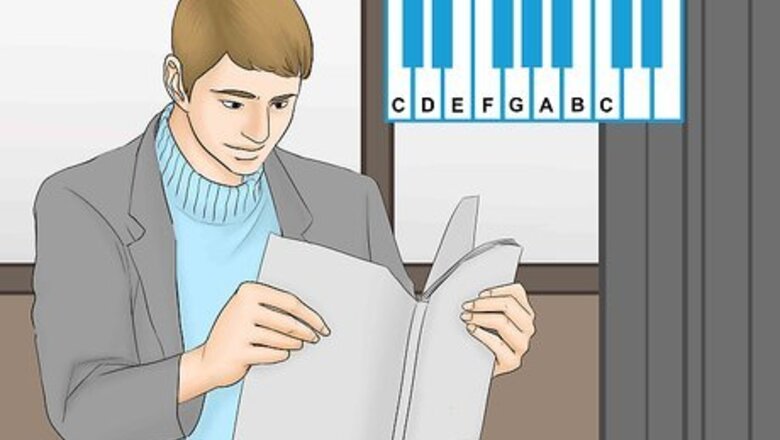
views
Getting to Know the Basics
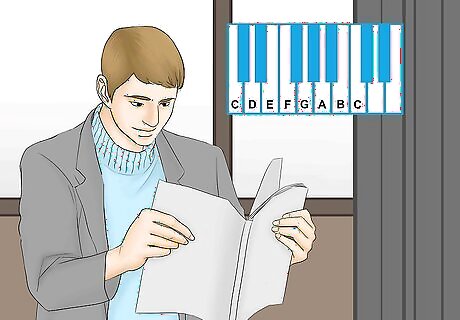
Study the musical alphabet. The musical alphabet is made up of only 7 letters (A, B, C, D, E, F, and G), but it’s the basic language that musicians use to write and talk about musical notes. Between these 7 notes there are also 5 other notes that are either sharp or flat. Sharp notes are 1 note higher in pitch than the regular letter that it uses, while flat notes are 1 note lower in pitch. For example, the A-sharp note is slightly higher in pitch than a regular A note. These notes are always in alphabetical order, going from A to G, on any instrument. When you go past the G note, the next note is just another A note and the entire order is repeated. If you play a musical instrument like piano, you can map this alphabet out on your instrument. For instance, memorize where the “C” note is played on the piano and then you’ll also know where C-flat, C-sharp, B, D, A, E, and F are on the opposite sides of the C key.
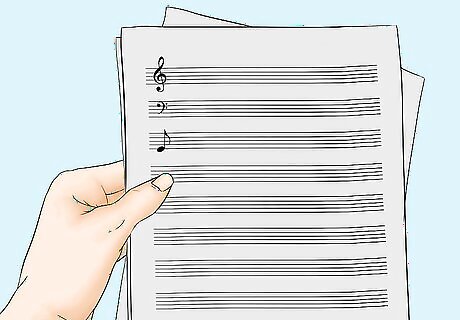
Get to know the basic elements of reading sheet music. Sheet music is written on a set of horizontal, parallel lines called the staff. Other small figures and lines are written on or around the staff to indicate things like which notes are played, how long each note is played for, and what rhythm the music should be played in. Clefs are various shapes written at the very beginning of a music staff, which tell you what pitches are on what line or space of the staff. The treble clef looks sort of like an ampersand, while the bass clef looks like a backwards C with 2 dots on top of it. The key signature appears next to the clef and is composed of 1 or several # (sharp) or b (flat) symbols on individual lines of the staff. These symbols indicate that all notes played on that line should either be played either sharp or flat. The notes on the staff lines indicate which notes to play on an instrument and are made up of 3 parts: the note head (a black oval that is either open or closed), the stem (the vertical line attached to the note head), and the flag (the curved stroke at the top of the stem). Note that not all notes contain all 3 parts at the same time. Different combinations of open or closed note heads, stems, and flags tell you how long to play an individual note in terms of beats or fractions of beats. For instance, an open note with no stem or flag is played for 4 beats, while a closed note with a stem is played for 1 beat.
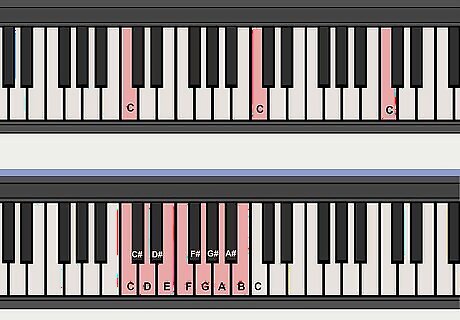
Learn the difference between scale and pitch. Pitch refers to how high or low on an instrument you play a certain note, such as the “C” note. There are 7 keys of difference between 2 different pitches of the same note (e.g., on a piano, you can play an A note in a higher pitch by moving 7 keys to the right). Conversely, scales are sets of notes that sound particularly good when played sequentially and are thus commonly used in songwriting. When you change the pitch of 1 note, you have to also change the pitch of any other note that you play with that first note in a scale. There are major scales for each of the 7 notes. There are also minor scales, which are similar to major scales, except the 3rd note in the scale is a half step lower than it is in the major scale.
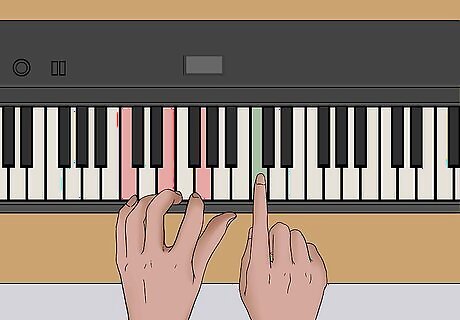
Familiarize yourself with chords. Chords are formed when 3 or more notes of the same pitch are played at the same time. After you’ve learned the different notes on your instrument, the next thing you should do is learn some of the most common chords played on it. For example, the C, E, and G notes are commonly played together across a variety of instruments as a single chord.
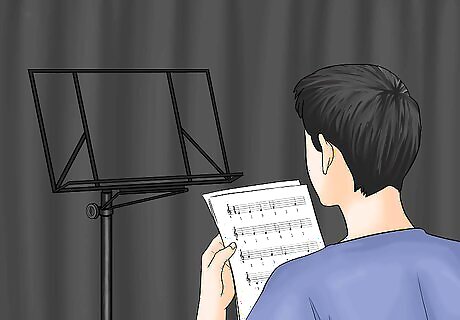
Make sure you’re aware of the importance of rhythm. Rhythm, in terms of music, refers to the consecutive arrangement of notes or beats placed at equal intervals of time. This means that you have to allow for the same amount of silence in between each musical note, or else the flow of the piece can be ruined. The rhythm at which a piece of music should be played is indicated on a staff by a time signature, made up of 2 vertically placed numbers next to the clef. The top number indicates how many beats there are in a measure of music, while the bottom number represents the note value which makes 1 beat. For example, a ¾ time signature would indicate that each measure in a piece of music contains 3 beats, while each beat contains 4 notes.
Doing Music Theory Exercises
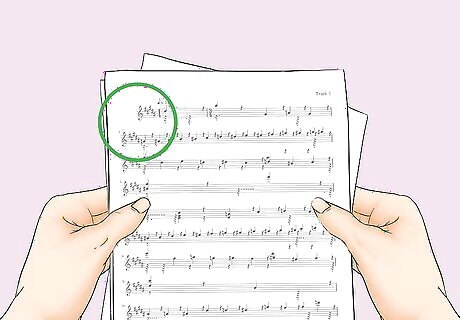
Identify key signatures written on a sheet of music. The key signature indicates which pitch the notes in the song will be played in. These are represented by sharp images or flat images on 1 of the lines of the staff, corresponding with the key that the song is. So for example, a sharp symbol on the top line of the staff indicates that the piece of music is in G-sharp. Try looking at several different written pieces of sheet music and see how many of the different key signatures you can identify. Make a note of any that you can’t identify and study those in greater detail.
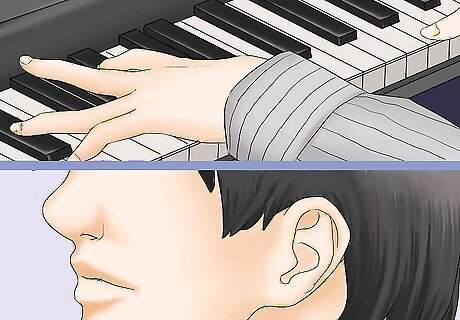
Practice identifying chords, scales, and notes that you hear. This is a part of learning music theory called “ear training.” Listen to either a single note, a chord, or a few seconds of a musical instrument being played. Then, try to name the note or notes being played just by listening to them. If you listen to a chord or scale, try to identify the name of the chord or scale as well. If this is particularly difficult for you, try starting out by just identifying 1 of the 7 natural notes when an individual note is played. Once you’ve mastered this, move on to scales, then chords, then entire songs.
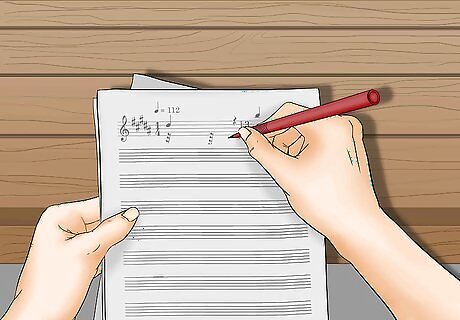
Build chords and scales on a staff from scratch. Write out a series of notes on the staff to build chords and scales that sound good in your head. First write the clef, time signature, and key signature on your staff. Then, write the individual notes on the separate lines of the staff that make up the chord or scale that you’re trying to write. This is a useful exercise for mastering the writing component of musical theory, as it forces you to write music solely based on your competence with the “language” of music. Focus on building simple chords and scales at first. As you start to feel more comfortable with this exercise, try writing longer and longer pieces of music. Eventually, you’ll have an entire song written!
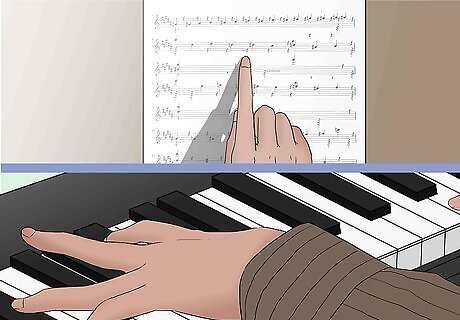
Use an instrument or sing to identify and play notes written on a staff. This exercise trains you to readily translate written music into actual performed sound. Look at a piece of sheet music, identify the notes as they’re written on the staff, and then either sing those notes or play them on an instrument that has the notes marked (e.g., a keyboard). Once you’ve mastered playing notes based on a piece of sheet music, practice playing chords and scales that you see written down. Make sure you practice playing the notes in the rhythm that is indicated on the staff. If you have trouble with this, practice keeping the rhythm first by simply tapping out the rhythm with your finger.
Learning a Musical Instrument
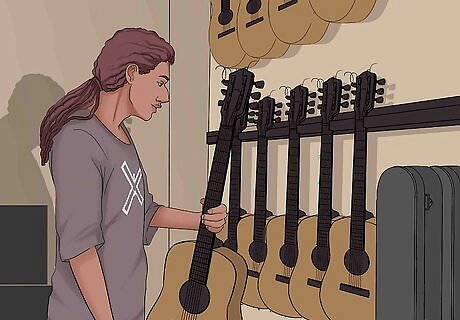
Choose an instrument that you’ll have fun playing. Regardless of your reasons for wanting to learn music, it’ll be much easier for you to stay motivated and persevere in learning an instrument if it’s something you actually enjoy. Experiment with several different instruments to see which one you enjoy playing the most. If you can, see if there’s a music store in your area that will let you come in and briefly try playing several of the instruments. Then, if you like 1 of the instruments in particular, consider buying it in the store!
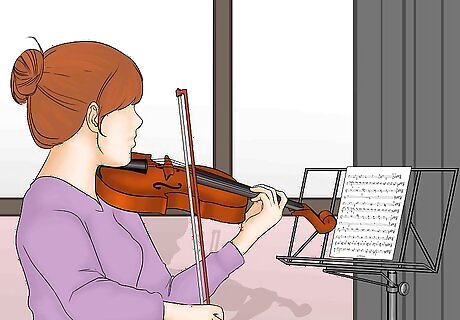
Practice playing notes, chords, and scales on your instrument. After you’ve mastered the concepts of notes, chords, and scales, learning how to produce these sounds with your instrument is the first step to learning how to play music. Start by practicing notes first, then move on to scales, and finally to chords. Once you’ve gotten the hang of these different components, practice playing a whole song from start to finish.
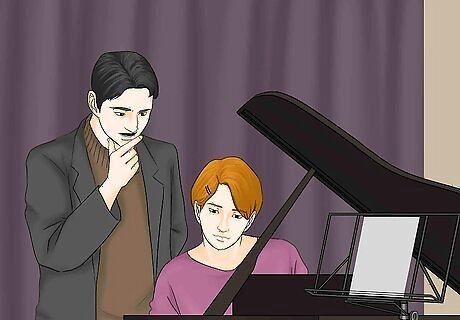
Take lessons from someone who knows how to play your instrument. You can find lots of available music teachers online or in newspaper classifieds. For best results, try to find a music teacher with a music degree and with teaching experience. You can also just watch instructional videos on YouTube if you don’t want to pay for an actual instructor.
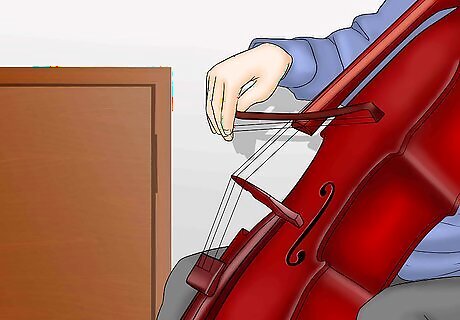
Make a daily practice schedule and stick to it. Learning to play an instrument is something that requires dedication; you can’t master the instrument overnight. Set aside a small amount of time each day to practice your craft and commit to sticking to this routine for the long haul. You don’t have to dedicate all of your time to practicing; just set aside 15-30 minutes for practice and watch as you make small, incremental progress over time.
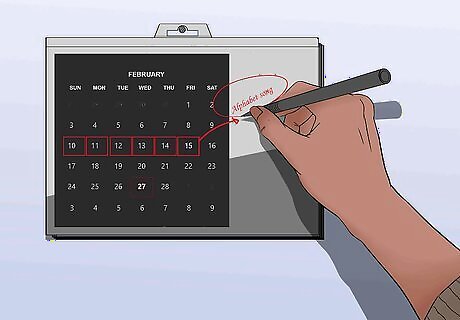
Set concrete goals for yourself each week. Your goals should be realistic, measurable, and achievable, rather than general aspirations, so that you’ll be able to know when you’ve achieved them. Aim to learn a new chord, song, or style of playing with your instrument, depending on what you want to get out of playing a musical instrument. EXPERT TIP Warren Lee Warren Lee Professional Pianist, Composer, and Music Educator Warren Lee is a Professional Pianist, Composer, and Music Educator based in Hong Kong. Lee is a concert pianist of the Hong Kong Philharmonic Orchestra and is on both the Steinway Artist and Naxos Recording Artist rosters. Lee was elected an Associate of the Royal Academy of Music in 2015. In 2017, he received the Ian Mininberg Distinguished Alumni Award from Yale University. He holds a Bachelor's degree in Music from the Royal Academy of Music and a Master's degree in Music from Yale University. Lee also holds an MBA degree from the Hong Kong University of Science and Technology and an LLM degree in Intellectual Property Law from the University of London. Warren Lee Warren Lee Professional Pianist, Composer, and Music Educator Music skills build life skills in creativity and learning approaches. Learning music builds life skills too, not just how to play notes. Getting creative and figuring out how to learn well in music class helps kids apply that to art, engineering, and more. Students say music lesson ideas pop up when working on all kinds of projects!




















Comments
0 comment